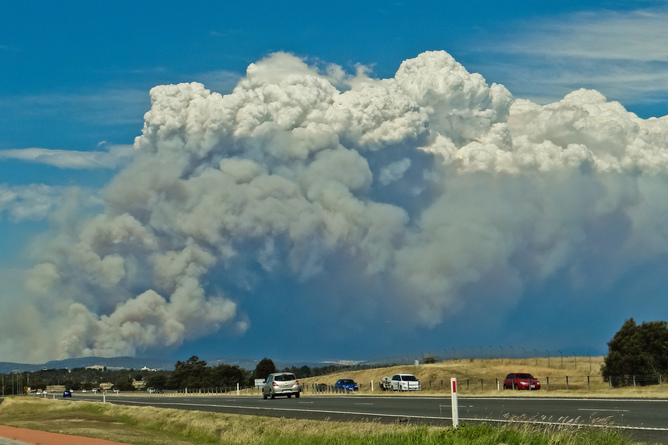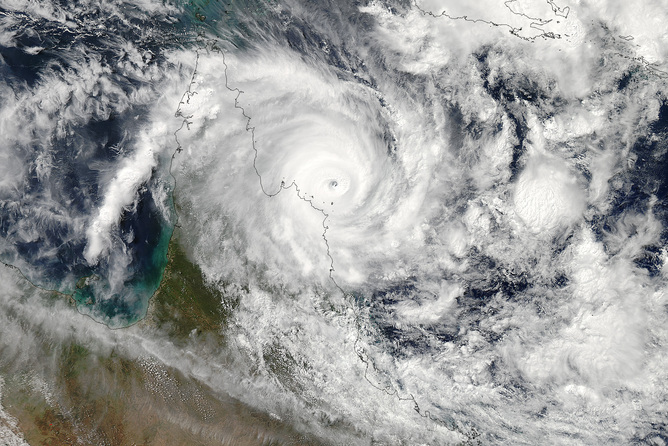Is social media responsible for your safety during a disaster? - Disaster & Emergency Management Conference

Is social media responsible for your safety during a disaster?
By Andrew Quodling, Queensland University of Technology and Emma Potter, Queensland University of Technology
Given the popularity of Facebook and Twitter, it’s not surprising so many people use social media in crises such as floods, fires and earthquakes.
Facebook has introduced Safety Check, a new tool for users in disaster-affected areas to notify their network of “friends” of their safety and check on their family and friends.
Facebook will send a notification to users who may be affected by a disaster, based on the location in their profile and geolocation data collected by apps.
People can then confirm they are safe or report that they are outside of the affected area. When a user confirms they are safe, Facebook will post this on their timeline and notify their friends.
This service from Facebook follows similar moves by other internet companies to become more proactive in crisis communications.
Twitter Alerts allows pre-approved law enforcement, emergency management and government agencies, as well as selected NGOs to send important messages to their followers via push notifications and text messages.
Google has also developed tools to streamline official communication from emergency responders to the public during disasters.
Social media in disasters
Sites such as Facebook and Twitter have become key sources that people turn to for help and information in natural disasters. Our experience in recent disasters, including the 2010-11 Queensland floods and 2013 Tasmanian bushfires, is proof of this.

Flickr/Kris McCracken, CC BY-NC-SA
Emergency management organisations often stress the importance of emergency preparedness for people who live in places that are prone to natural disasters.
But while social media can be a handy resource in crises, people must be careful not to take their access for granted during emergencies. Floods, fires and earthquakes often disrupt the power and communications infrastructures that smartphones rely upon.
Granted, internet companies such as Facebook and Google are keenly aware of this problem and are working to provide internet access remotely through arrays of unmanned drones, stratospheric balloons and satellites.
But for the time being, our access is constrained by the limitations of copper, fibre, hybrid and cellular internet technologies, and their vulnerability to the elements.
New media, new concerns
In a crisis, it is critically important that governments are able to communicate information to citizens that is both accurate and up to date.
With traditional systems, such as radio and television, this is a relatively simple process — emergency management organisations cooperate with media producers to ensure that the information broadcast is current and correct.
This is a more challenging process with new media platforms, because of the different ways that users share information. While traditional media would stop broadcasting any outdated information, social media posts can still be shared well after their accuracy has expired.
Some research has suggested that users have been able to police each other’s social media and hashtag usage during disasters.
But the cost of failure — whether it is the sharing of false or outdated information — can be tragic if it results in a diversion of resources from where they are truly needed.
Facebook’s lack of transparency makes it difficult to know how its social algorithms are geared to facilitate accurate communication in times of crisis.
As tempting as it may be to trust Facebook’s service, we do not know if posts from users in emergency zones are treated any differently by its algorithm than posts about ice bucket challenges or Kardashians, or how widely-read a user’s call for help might be.
There may also be legal ramifications if a platform’s algorithms favour posts that are outdated or misleading. Courts in Australia and Germany have held Google responsible for defamation. Will platforms that engage in crisis communications also be liable for their technological failings?
If Facebook aims to become a go-to service for its users during natural disasters, the effectiveness of its algorithms must be a key concern.
Trial by fire?
So while we’re yet to see how Safety Check works in action, some of its features seem potentially problematic.
Safety Check doesn’t seem to allow users to report themselves as unsafe, only that they are safe or outside of the affected area.

NASA
At first blush, this bears resemblance to the social media guides of emergency management organisations, emphasising more traditional communication methods where there is immediate danger.
It also helps position Facebook in a way that minimises its users’ expectations of Facebook’s role as an emergency service provider.
The system also has a basic, on/ off-style understanding of safety. The design of the system might be focused around the types of disasters that Facebook’s developers see more of, such as earthquakes, where safety can often be quickly and easily established after a tremor or series of tremors.
Fires, floods and cyclones, on the other hand, can be long and unpredictable events. Floods can last over a number of days or weeks, or in the case of bush fires and cyclones, their path may change as the disaster evolves.
This raises questions about how and when Facebook will disseminate safety notifications. If a bushfire is occurring near a major population, for example, at what point do users in the affected area receive a notification?
Safety Check’s main problem is that in spite of its celebrated launch, it seems to be a hobby-style project for Facebook — as the tool was designed at a “hackathon”, not in consultation with any emergency management organisations.
In spite of our concerns, it is encouraging to see an organisation such as Facebook taking responsibility for its users and entering the crisis communication space.
A tool that helps family and friends during a crisis, and facilitates easy communication is a welcome development.
![]() This article was originally published on The Conversation.
This article was originally published on The Conversation.
Read the original article.
To find out more about the conference or to register for the Australian and New Zealand Disaster & Emergency Management Conference please visit www.anzdmc.com.au.



